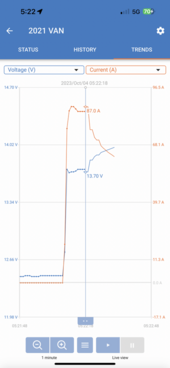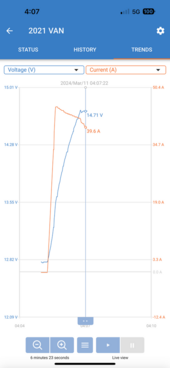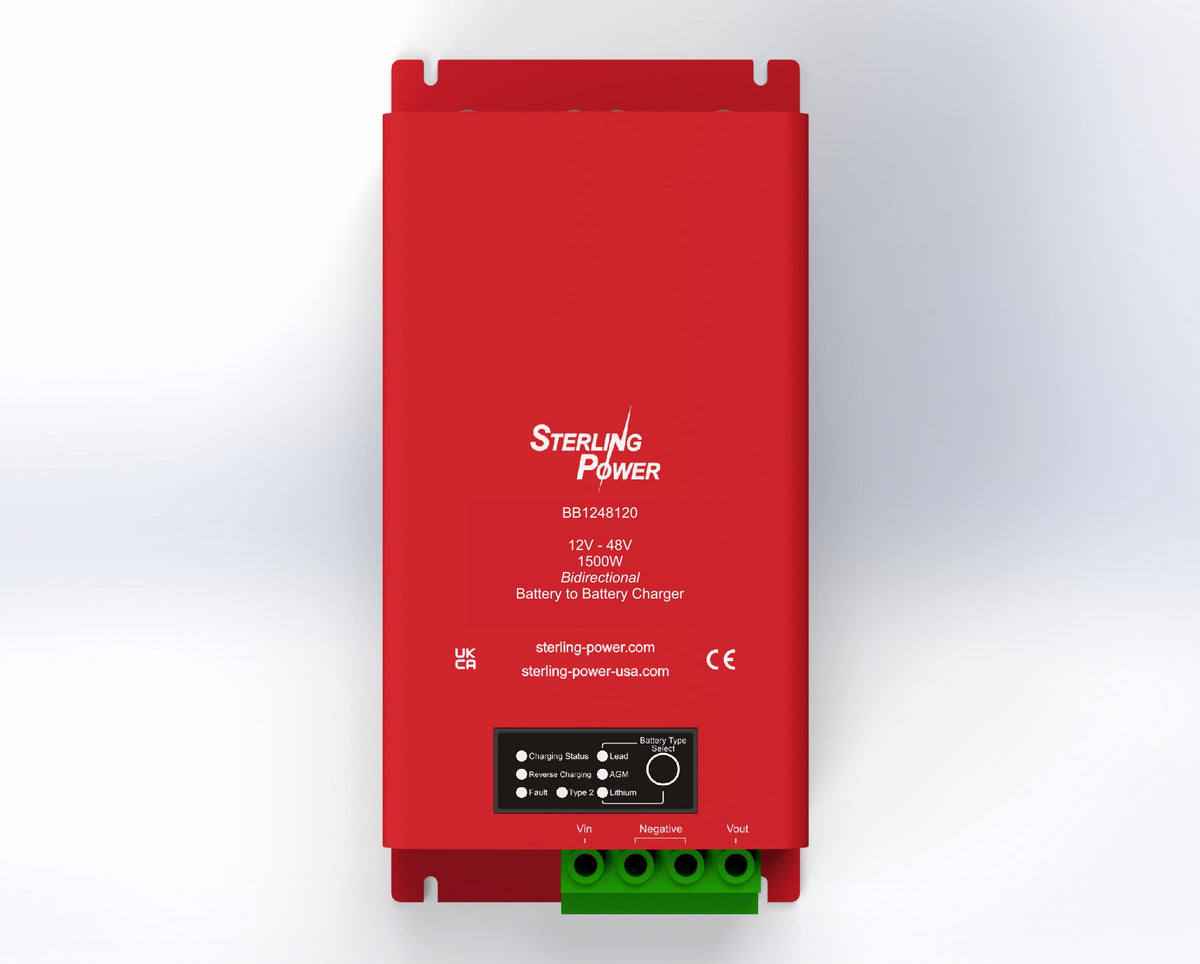HarryN
Solar Addict
I can understand what you are describing @justinm001
Do you have any experience with alternator charging house batteries; DC2DC / Inverter / Alternator Direct ?
DIY Van Building is a process of research, design, & build. IMO also “Experimental” somewhat like Experimental in Aviation ,,, just unregulated & the vehicle is already licensed & operational.
To research Alternator Charging of House Batteries of “Any Kind”, a DIYer should get the specification of “available” excess power from the Vehicle Manufacturer that factory alternator can provide & the parameters of that. Good Luck.
I can tell you Promasters come with 180a or 220a alternators ( 220a are for RV & Ambulance ) upfitters. Thru The Promaster Forum, the manufacturer’s factory loads have been presented ( it is like pulling teeth with Ram ). The 180a barely satisfies the Promaster’s factory equipment requirement if everything is on.
Near Death Valley & other areas where extreme heat occurs or heat & steep highways I have seen highway signs telling drivers to turn off their air conditioning.
Are you against Inverter Alternator Charging house batteries or all stock alternator charging house batteries ?
Internal regulators that are part of most modern alternators are typically stamped with “D, C, or S”. These are sensor (typical male spade connectors). I would assume most modern vehicle regulators are “C” which means computer controlled. A DIY would have to obtain ( very unlikely ) the manufacturer’s software parameters & design supplement alternator powered loads such as “house batteries”. Or a written document that described the allowable auxiliary load ,,, good luck with that.
A Thread for You if you are interested to in what I was referencing above;

180 amp Alternator with amp clamp on output
www.promasterforum.com
View attachment 216131
LOL ,,, That Depends ( Ya Might Be Overloaded with Only Factory Loads ).
Final Note; @HarryN designs quite conservatively from what I typically see out there. Example; He typically design battery banks that can provide twice the amps than needed to run say an inverter’s “Max Continuous Power”.
Not the typical Vehicle Manufacturers be like (how many amp can I have from my factory alternator for aux - Ram Depends maybe “none amps”).
I have seen many DIYers loads needed @ say 100amps & their batteries specs be capable of 100amps max continuous. Designed to run @ 100%, thus in Engineering speak 0% Factor of Safety. Each to Their Own I Suppose.
Thanks -- that was the chart I was looking for for typical loads.









